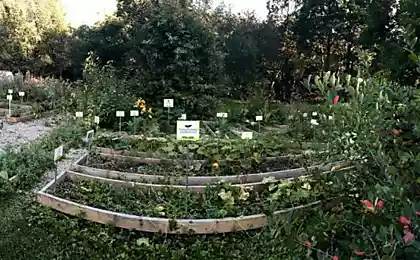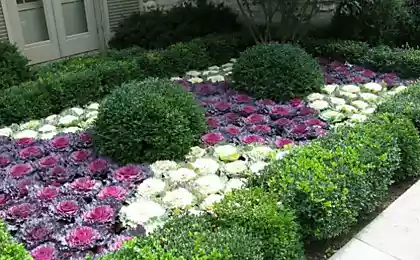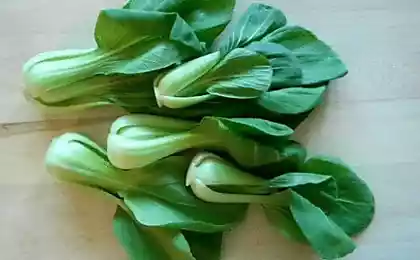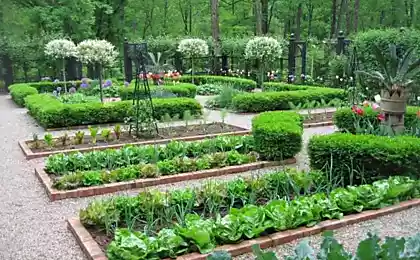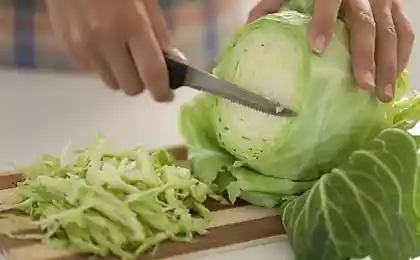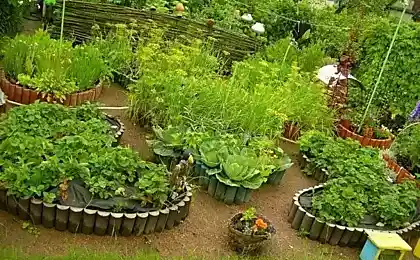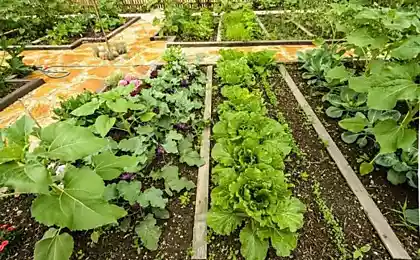756
What to do to cabbage in the beds didn't crack
Many gardeners are familiar with the situation, when ripening or already ripe cabbages crack.
The question is why crack cabbage and what can be done to prevent this problem, we will discuss today.
Why crack cabbage: the main reasons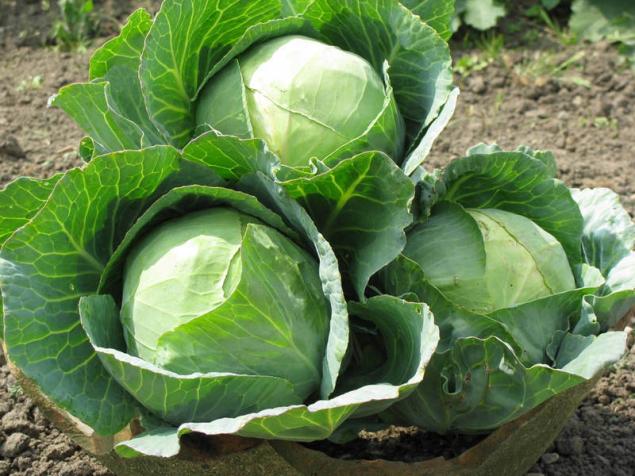
In fact, the main reason for the appearance of cracks on the forks of cabbage is excessive moisture, which they take in themselves cabbage leaves. But lead to the accumulation of this moisture inside Kachanov cabbage can:
Also worth bearing in mind that is predisposed to cracking certain varieties of cabbage, especially varieties of early ripening.
Cabbage — water-loving plant. It needs constant watering. If watering occurs from time to time, as often happens in the cottages, cabbage absorb moisture unevenly and after the next irrigation can crack. This is particularly a problem for urban residents, which can water the garden only on the weekend.
When the soil is in the cabbage beds, for example, 3-5 days were dry, and suddenly it abundantly watered, Kale attempts to absorb into the leaves as much moisture as possible. In this case, when the set moisture quickly start to grow leaves inside the head. The upper leaves are growing slower than the internal and it turns out that the rapidly growing inner leaves torn cabbage head from the inside. And develop cracks.
The same thing happens with temperature changes: if long stood dry weather, and then went heavy rains, the sudden influx of moisture could again serve as a reason why crack Kale.
What to do to avoid cracked cabbage
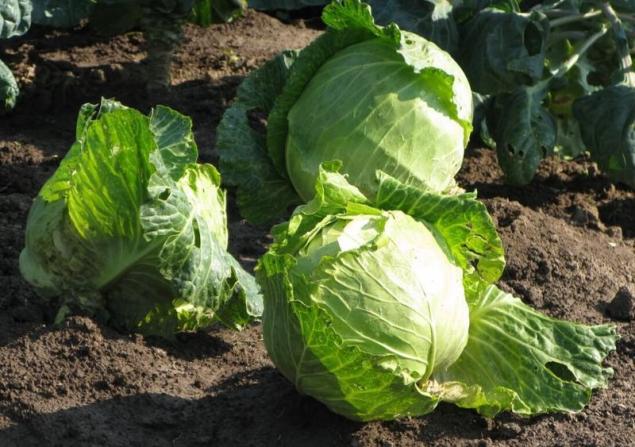
To prevent cracking of the cabbage in this case you can organize a drip irrigation. Cabbage to get the water evenly and will not crack during weather extremes. If you have not, try to plant cabbage near a well, pond or elsewhere in the garden, where soil moisture is more.
If was raining and you are afraid of cracking heads of cabbage, try to make the drainage of water from the cabbage beds. Also, experienced gardeners in this case it is recommended to slightly raise the cabbage Bush or slightly rotate it around its axis (not cabbage and cabbage leaves in whole). Therefore, some roots of the cabbage will be damaged and the influx of moisture to the heads reduced.
It is important to ensure timely harvest. When the cabbage begins to burst, it usually means that she has matured and it's time to remove it. It's easy to see if you grow several varieties of cabbage. The different ripening. When the late varieties are still intact, the early start to crack. This happens not only because the cabbage is ripe, and because her growth stopped, and the roots continue to supply water and nutrients.
Cracks in cabbage can appear in September, when the temperature drops outside. For example, if the temperature fell and for a long time did not rise above 20 degrees, the growth of cabbage slows down. And when suddenly the temperature rises to +25 in September are not uncommon, the leaves begin to grow, and the heads crack. In this case, it is better to remove the sprouts at the first sign of cracking.
How to save cracked cabbages
Cracked head of cabbage in storage are not suitable. Too great a risk of rotting. The heads are better to use for domestic preparations. Cabbage can be fermented, to preserve the salads or to dry using electrosurge. So your work will not be lost.
Also interesting: This surprisingly common Kale — the benefits and likely harm
How to grow organic cabbage crop — the secrets of experienced gardeners
By the way, if pickled and canned cabbage we all have become accustomed, dried cabbage variant is relatively new. This cabbage can be used for soup or to take with you camping or beach trip.published
Source: usadbaplus.ru/pochemu-treskaetsya-kapusta-na-gryadkah/
The question is why crack cabbage and what can be done to prevent this problem, we will discuss today.
Why crack cabbage: the main reasons

In fact, the main reason for the appearance of cracks on the forks of cabbage is excessive moisture, which they take in themselves cabbage leaves. But lead to the accumulation of this moisture inside Kachanov cabbage can:
- untimely watering;
- changes in temperature;
- too rainy weather;
- late collection of ripe cabbages.
Also worth bearing in mind that is predisposed to cracking certain varieties of cabbage, especially varieties of early ripening.
Cabbage — water-loving plant. It needs constant watering. If watering occurs from time to time, as often happens in the cottages, cabbage absorb moisture unevenly and after the next irrigation can crack. This is particularly a problem for urban residents, which can water the garden only on the weekend.
When the soil is in the cabbage beds, for example, 3-5 days were dry, and suddenly it abundantly watered, Kale attempts to absorb into the leaves as much moisture as possible. In this case, when the set moisture quickly start to grow leaves inside the head. The upper leaves are growing slower than the internal and it turns out that the rapidly growing inner leaves torn cabbage head from the inside. And develop cracks.
The same thing happens with temperature changes: if long stood dry weather, and then went heavy rains, the sudden influx of moisture could again serve as a reason why crack Kale.
What to do to avoid cracked cabbage

To prevent cracking of the cabbage in this case you can organize a drip irrigation. Cabbage to get the water evenly and will not crack during weather extremes. If you have not, try to plant cabbage near a well, pond or elsewhere in the garden, where soil moisture is more.
If was raining and you are afraid of cracking heads of cabbage, try to make the drainage of water from the cabbage beds. Also, experienced gardeners in this case it is recommended to slightly raise the cabbage Bush or slightly rotate it around its axis (not cabbage and cabbage leaves in whole). Therefore, some roots of the cabbage will be damaged and the influx of moisture to the heads reduced.
It is important to ensure timely harvest. When the cabbage begins to burst, it usually means that she has matured and it's time to remove it. It's easy to see if you grow several varieties of cabbage. The different ripening. When the late varieties are still intact, the early start to crack. This happens not only because the cabbage is ripe, and because her growth stopped, and the roots continue to supply water and nutrients.
Cracks in cabbage can appear in September, when the temperature drops outside. For example, if the temperature fell and for a long time did not rise above 20 degrees, the growth of cabbage slows down. And when suddenly the temperature rises to +25 in September are not uncommon, the leaves begin to grow, and the heads crack. In this case, it is better to remove the sprouts at the first sign of cracking.
How to save cracked cabbages
Cracked head of cabbage in storage are not suitable. Too great a risk of rotting. The heads are better to use for domestic preparations. Cabbage can be fermented, to preserve the salads or to dry using electrosurge. So your work will not be lost.
Also interesting: This surprisingly common Kale — the benefits and likely harm
How to grow organic cabbage crop — the secrets of experienced gardeners
By the way, if pickled and canned cabbage we all have become accustomed, dried cabbage variant is relatively new. This cabbage can be used for soup or to take with you camping or beach trip.published
Source: usadbaplus.ru/pochemu-treskaetsya-kapusta-na-gryadkah/
ByFusion turns plastic debris from the ocean in environmentally friendly building blocks
How to cope with anger and nervousness children: effective methods of Maria Montessori

